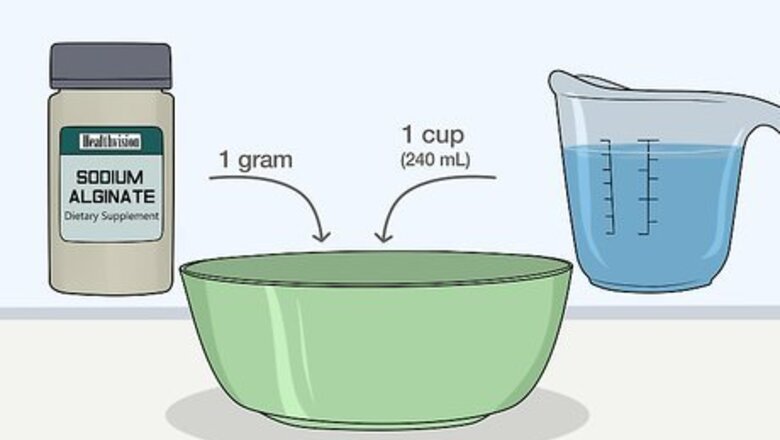
views
Making Edible Water Bubbles
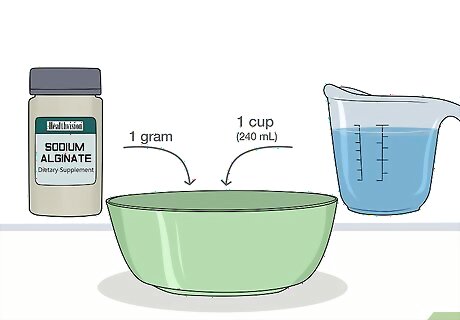
Mix 1 gram of sodium alginate with 1 cup (240 mL) of water. Use a kitchen or a digital scale to measure out 1 gram of sodium alginate. Place it into a bowl, then add 1 cup (240 mL) of water. Mix the 2 ingredients together using an immersion blender until the sodium alginate dissolves. You can purchase sodium alginate online. It is a natural ingredient that comes from brown seaweed. If you don't have an immersion blender, you could try a regular blender or a whisk. Don't worry if the mixture develops air bubbles. These will go away as you prepare the other ingredients.
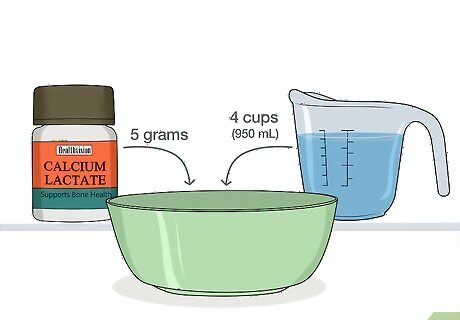
Mix 5 grams of calcium lactate with 4 cups (950 mL) of water. Pour 4 cups (950 mL) of water into a large bowl, separate from the first bowl. Add 5 grams of calcium lactate. Stir the 2 ingredients together with a spoon until the calcium lactate dissolves. Make sure that you are using food-grade calcium lactate. It's a type of salt used in cheese that can be bought online.
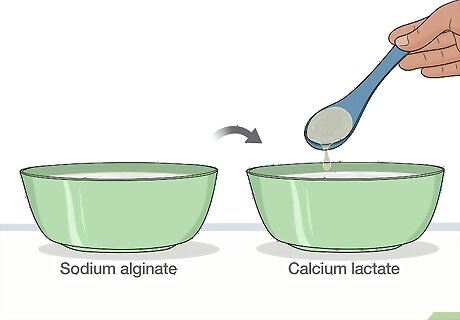
Add spoonfuls of sodium alginate water into the calcium lactate water. Take a deep spoon, such as a sauce ladle, and scoop up some of the sodium alginate mixture. Hold the spoon over the surface of the calcium lactate mixture, then carefully tip its contents in. Do this a few more times until the bowl is filled. Do not overcrowd the bowl with sodium alginate.
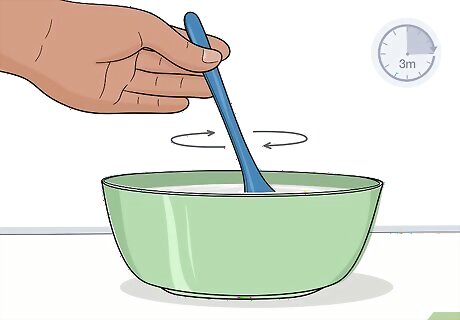
Stir the mixture for 3 minutes. Use a slender spoon to gently stir the contents in the large bowl. Keep stirring for 3 minutes. This will help activate the ingredients, and cause the sodium alginate to condense into "bubble" shapes.
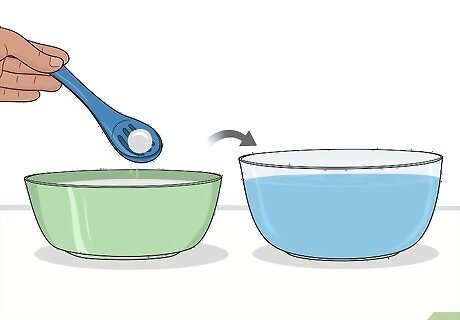
Transfer the bubbles with a slotted spoon into a bowl of water. Fill a large bowl with plain water; the exact amount does not matter, as long as it is filled. Use a slotted spoon to remove the sodium alginate bubbles 1 by 1, and transfer them into the water. This will help stop the reaction.
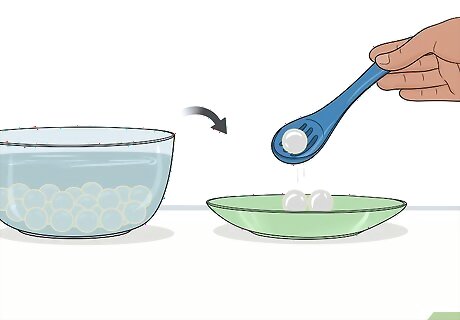
Scoop the bubbles from the water with a slotted spoon. Set them down onto a plate or into a bowl. At this point, you can eat, drink, or slurp the bubbles up. You can also give them to young children to play with as a sensory activity! Because these bubbles don't contain much, don't expect them to be very tasty!
Making Japanese Raindrop Cake
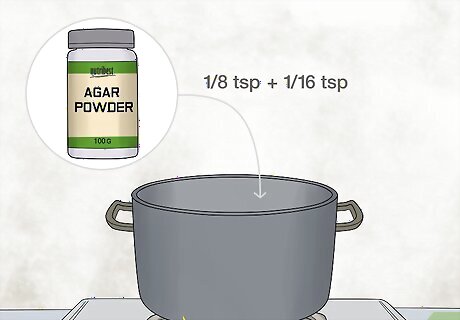
Place 1/8 teaspoon plus 1/16 teaspoon of agar powder into a saucepan. Get out a set of measuring spoons. Use the 1/8 teaspoon to measure out 1 1/2 scoops of agar powder into a saucepan. For best results, use Japanese-style "Cool Agar." Do not use agar flakes.
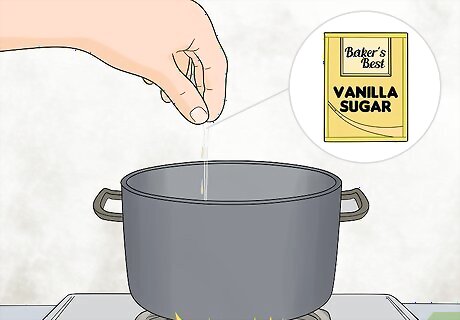
Add a pinch of vanilla sugar if desired. Japanese raindrop cakes are supposed to be flavorless; you add the flavor with soybean flour and sugar syrup once you are ready to serve the cakes. If you want a sweeter, less-traditional raindrop cake, add 1 pinch of vanilla sugar.
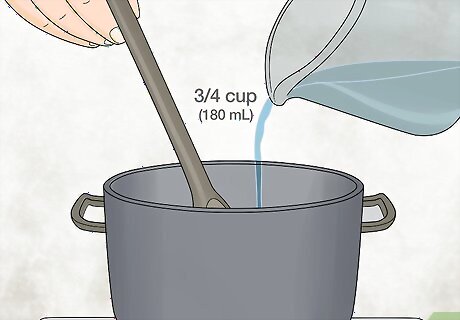
Stir in 3/4 cup (180 mL) of water. Pour the water into the saucepan a little bit at a time. Stir the water with a spatula until the agar powder dissolves. The traditional recipe calls for mineral water, but if you can't find that, spring or filtered water will do.
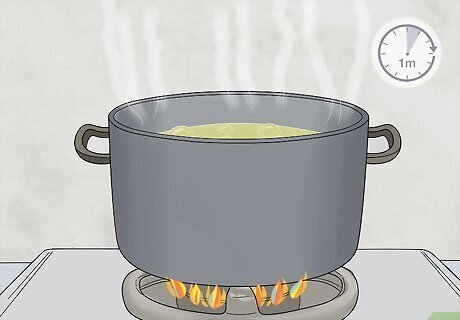
Bring the mixture to a boil over medium heat, then cook it for 1 minute. Set the saucepan on a stove. Turn the heat up to medium, and wait for the mixture to come to a boil. Cook the mixture for 1 minute, stirring occasionally, then take the saucepan off the stove. The timing is important. If you undercook the mixture, the agar won't dissolve. If you overcook the mixture, it will condense too much.
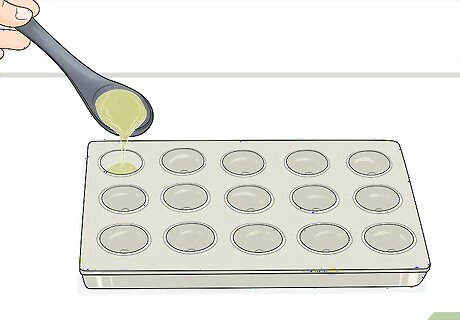
Pour the mixture into spherical molds. You can use special molds made specifically for raindrop cakes, or you can use large, round silicone molds instead. If your mold is a 2-part mold that looks like a deep tray with wells in it, do the following: Fill the lower mold so that the wells overflow and the tray is half-filled. Wait 2 minutes, then add a filling, such as an edible flower or strawberry. Place the upper mold (with the holes in it) on top. Press down on the upper mold until the excess gelatin flows out of the holes.
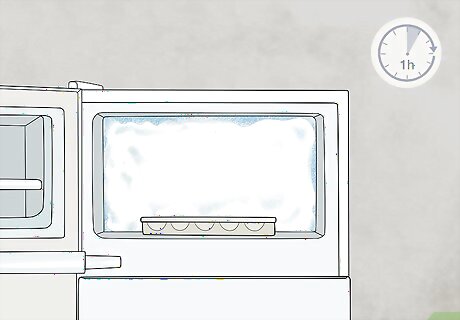
Chill the molds in the fridge for at least 1 hour. The raindrop cakes will be set within 1 hour, but nothing will happen if you leave them there longer. In fact, it would be even better if you left them there overnight. How many cakes you end up making depends on how many cavities were in your mold.
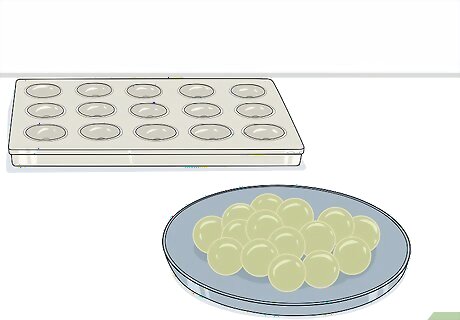
De-mold the cakes as soon as you are ready to serve them. These jiggly treats will melt and lose their shape after only 20 to 30 minutes, so plan ahead. Once you are ready to serve the cakes, turn the molds upside down onto serving plates, and let the cakes slide out. Place each cake onto a separate plate.
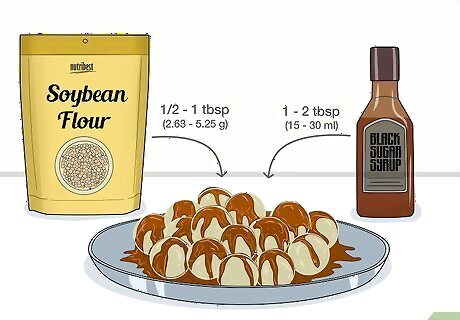
Serve the cakes with soybean flour and black sugar syrup. Add 1/2 to 1 tablespoon (2.63 to 5.25 g) of roasted soybean flour next to each cake. Drizzle 1 to 2 tablespoons (15 to 30 mL) of black or brown sugar syrup over each cake. Alternatively, you can place the syrup next to each cake instead of drizzling it on top. You can make your own black or brown sugar syrup. Follow a simple syrup recipe, but use brown sugar instead of white. If you can't find soybean flour and black sugar syrup, or if you simply don't like them, drizzle some honey or agave nectar over the cakes instead.




















Comments
0 comment